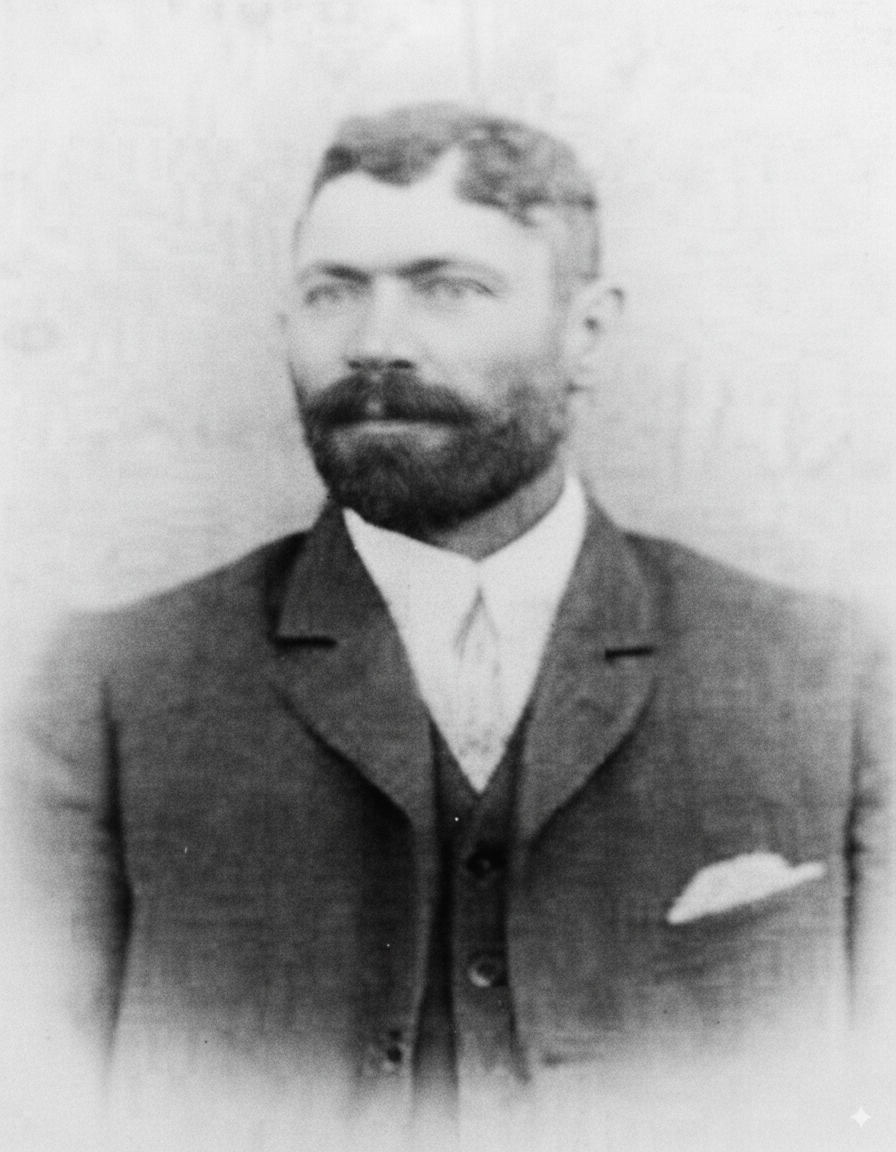Anglo Boer War: Remembering the Foreign Volunteers: 6
ANGLO BOER WAR: REMEMBERING THE FOREIGN VOLUNTEERS: 6
Jennifer Bosch
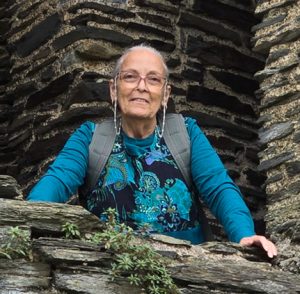
Jakkals and Wolf
Wolf Jacobson
Wolf Jacobson
Wolf Jacobson, originally from Riga, Latvia, emigrated to England with his brother Lewis after the early death of their parents, bringing their sister Lena Kaminsky with them. Wolf was the first among them to move further to South Africa, settling in Fauresmith, Orange Free State, a small Jewish community. During the Anglo-Boer War, Wolf volunteered to fight for the Boers. Alongside Joseph “Jakkals” Segal, another Jewish scout, he gained fame for their scouting skills. Wolf never surrendered, known as a “bittereinde,” and was awarded a gold medal and citation for bravery after rescuing two injured comrades across enemy lines. His daughter later donated these treasured items to the Jewish Order of Druids.
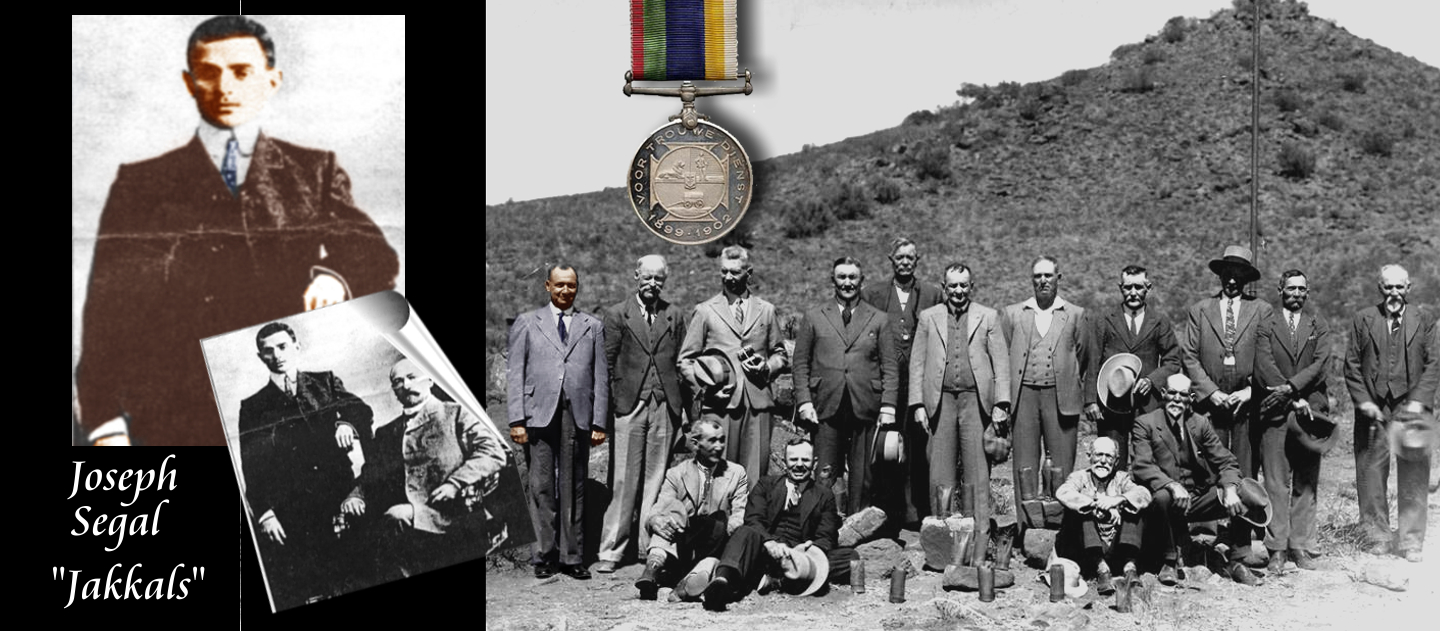
Joseph “Jakkals” Segal, a young merchant from Phillopolis, became an essential Boer scout under General Christian DeWet. He is celebrated for warning the Boer army of a British ambush by swimming the flooded Caledon River, thereby saving a battalion. Segal was highly honored by DeWet for his bravery and loyalty. After the war, Segal returned to farming, maintained strong ties with key figures such as General Hertzog, and famously confronted antisemitism publicly. Like Wolf Jacobson, Segal never ceased his commitment to the Boer cause despite being captured late in the conflict.
Joseph’s family—including his father Abraham and uncle Moses—also fought and suffered during the war. Moses Segal was captured, imprisoned as a prisoner of war in Bermuda, and suffered significant hardship, including theft of his possessions and denial of compensation due to statelessness caused by migration. Moses was a skilled craftsman who carved symbolic walking sticks during captivity, reflecting his loyalty to the Boer republics and their leadership. His walking stick is preserved as a rare artifact representing Jewish contributions and sacrifices during the war.
The war greatly impacted Jewish communities in South Africa, especially in Cape Town, where thousands of Jewish refugees fled the violence in the northern territories. These refugees faced difficult living conditions, were supported through community fundraising, and contributed to significant social and religious changes. The influx broke the religious monopoly of the Gardens Synagogue, leading to new congregations with varied religious orientations. Refugees were also involved in relief labour projects, and Jewish cultural life flourished despite hardships, leaving enduring legacies in both religious life and infrastructure such as Cape Town’s roads.
SRC:
https://www.geni.com/people/Wolf-Jacobson/6000000061833187821]
[talesofawanderingjew. blogspot.com /2006/12 /jews-of-anglo-boer-war. Html]
[jewishgen.org/SAfrica/military/commando.htm?fbclid=IwAR3v5pscRCciXPDp-C500ldi_kiZHEZGKL7p7x_fd1mnCglnMMx89ofjAV0#tn1]
[https://www.sajbd.org/media/mementos-of-the-anglo-boer-war]
Captain Stalberg and Lieutenant Baerentzen
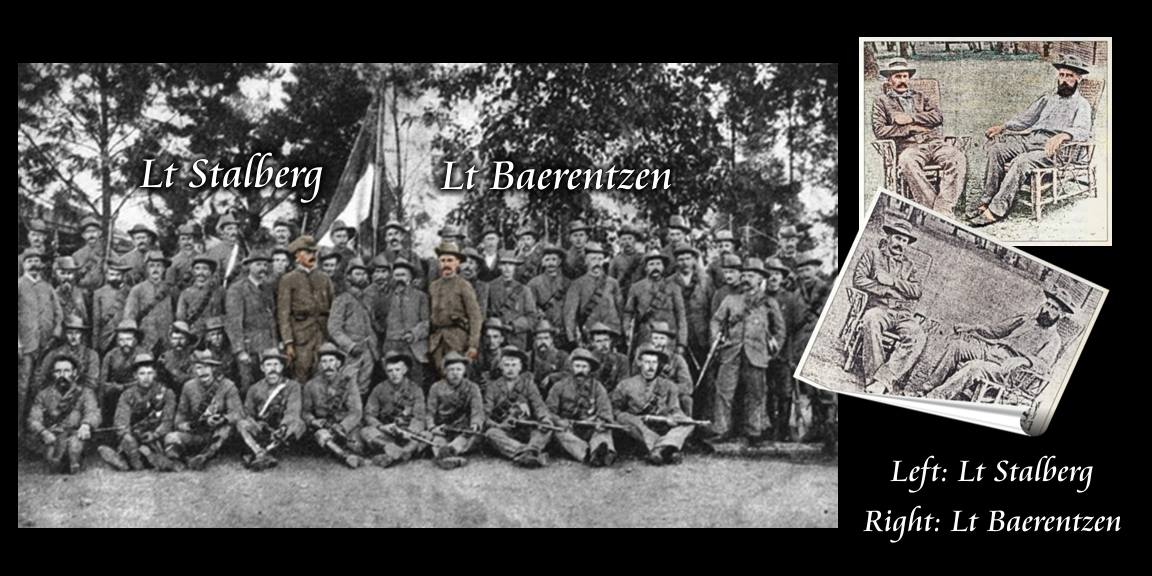
Small Insert Photos show Captain Stalberg (left) and Lieutenant Baerentzen (right) as prisoners of War in Ceylon, c 1900.
Erik Stalberg and Lieutenant Baerentzen
Sweden
It was out of a need of housing and employment that a few Scandinavians got together with the aim of assisting their needy fellowmen by creating a Scandinavian Club. The Central Committee, of which both Stalberg and Baerentzen were members, was in Pretoria and a Local Committee, in Johannesburg.
By the time the Anglo Boer War broke out, and after a meeting on 12 October 1899, the Scandinavian Corps was formed and their military services offered to the Transvaal government. Model 1888 Mauser rifles were provided by the Transvaal Government while clothes suitable for use as uniforms were bought by the Committee.
Stalberg had previously served as a Warrant Officer with the Royal Swedish Army and now found himself in charge of military training. Most of the men had never seen a Mauser and few knew how to ride a horse.
By mid-October the corps of between 100 men and 130 horses were taken to Klerksdorp by train and there they continued training. Stalberg faced a challenge in that even he had not been on the back of a horse, nor had he been in the field and had to make do with a few hours training which he received from a local policeman.
The Scandinavian escorted the Long Tom siege gun en route to Mafekeng and then joined forces with General Piet Cronje at Rietvlei. Under Commandant Wolmarans, they saw their first action on Mafeking on 25th October and then again during the night of the 4-5th November.
Magersfontein
Gen Cronje sent orders to Comdt. Tolly de Beer to abandon the outpost. This communication does not reach the Scandinavians who face 2 British attacks, one at 2 pm and the other at 6:15pm. Capt. Flygare is one of the first to die and Stalberg is wounded 3 times. He orders his men to abandon the outpost.
After Magersfontein they moved north with Bloemfontein being their final destination. They lost their horses to the British as the farm where they were being kept was taken by the British. The Scandinavians had to walk. They encountered British as they travelled and their numbers dwindled. Men were lost to British bullets, and many were taken prisoner by the British. Finally, on the 27 February 1900, the 47 Scandinavian men remaining marched into captivity.
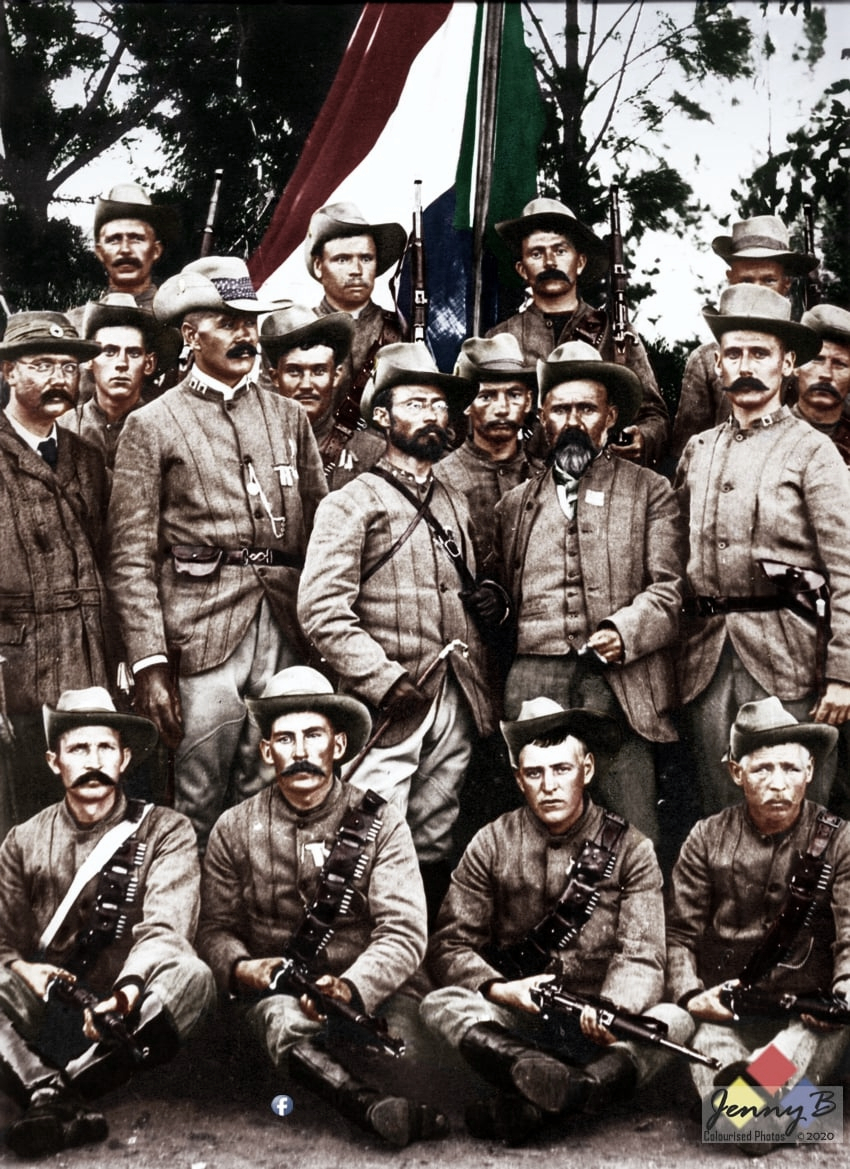
The Scandinavian company in Pretoria, probably on 16 October 1899. Under the banner, is a group of five officers. They are, from left, 2/Lt QM Claudelin, 1/Lt Stalberg, Cpt Flygare, 1/Lt QM Appelgren and 2/Lt Baerentzen. Except for Claudelin, all of these officers were killed or wounded and taken prisoner at Magersfontein, 11 December 1899.
Source and image credit:
http://samilitaryhistory.org/vol145sb.html
https://www.angloboerwar.com
http://www.alternativefinland.com/finns-fought-boer-war…/
Lodewijk Ruysenaars
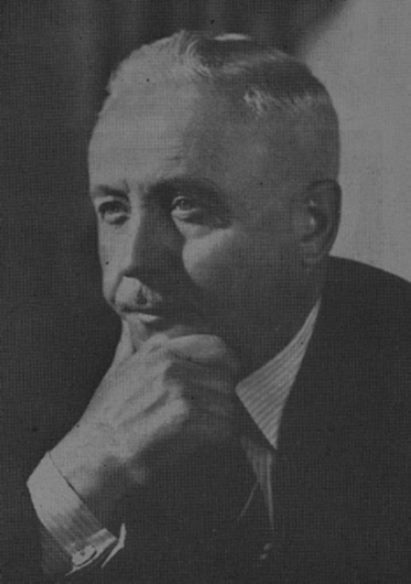
Lodewijk Ruysenaars Prisoner no 1993 aged 25 years from Pretoria was captured at Elandslaagte 21/10/1899 served with the Melt Marais Commando. He was sent to St Helena.
During the Anglo-Boer War, Boer prisoners of war (POWs) creatively engaged in various forms of entertainment to cope with the hardships of captivity. Music and theatre were central to their cultural life in the camps. Initially, singing, particularly of Psalms, was popular, though it sometimes caused disputes due to singing at all hours. To improve the quality of singing, music lessons were organised, and instruments like pianos and organs were procured. Camps such as Diyatalawa and Deadwood developed rich musical cultures with orchestras, choirs, and performances of classical and popular music.
In the POW camps, theatre became a significant outlet for expression and morale. At Diyatalawa, Shahjahampur, and St Helena, prisoners organised theatrical performances, musicals, and choirs, often with religious and patriotic themes. Foreign volunteers and city-dwelling Afrikaners frequently took the lead in these cultural activities. A notable figure in theatre was L. Ruyssenaers, a 25-year-old Hollander with blonde hair and rosy complexion.
Ruyssenaers played a notable role in Boer POW entertainment initiatives by performing in theatrical productions, often taking on female roles that were met with great enthusiasm by fellow prisoners. At about 25 years old and of Dutch descent, he was known for his convincing portrayal, wearing wigs made from fibrous plants found on St Helena Island and costumes, which delighted audiences and earned him repeated calls to the stage. His performances brought humour and a sense of escape to POWs enduring harsh conditions, helping to lift spirits and offer a momentary reprieve from incarceration.
He acted in plays scripted largely by camp writers like Houtzager, including popular works such as “De Dochter van den Tamboersmajoor,” “Het Schaakprobleem,” and “De barbiersjongen.” His theatrical appearances were part of a broader cultural life in the camps involving music, choirs, and comedies that helped sustain morale. Ruyssenaers’ role was significant enough to be remembered as a highlight of camp entertainment.
Overall, Ruyssenaers contributed as a key actor in the POW camps’ music and theatre scene, embodying the humour and camaraderie that helped prisoners endure their captivity by connecting them to familiar cultural expressions and communal joy despite adversity.
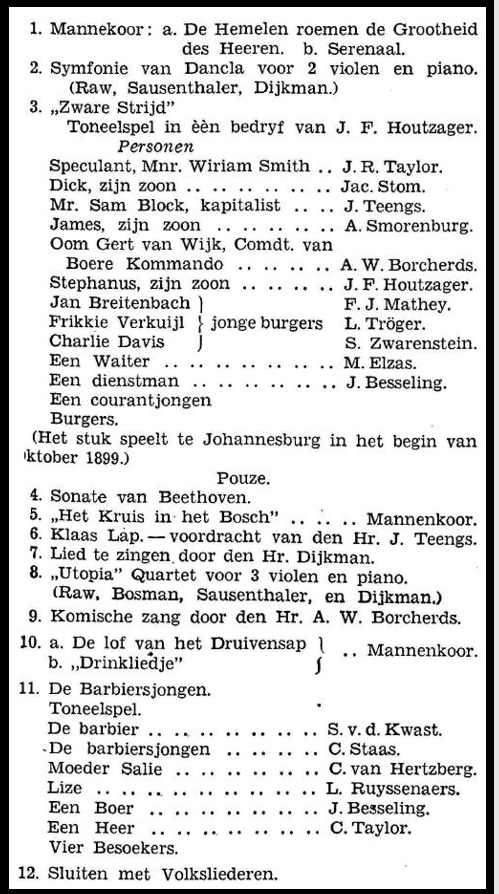
Transcribed contents of a program.
Alexei Nikolaevich Ganetsky
In early March 1900, a separate Russian detachment was created by Alexei Nikolaevich Ganetsky. It consisted of 57 people, but there were only 20 Russians, the rest were Germans, Portuguese, Italians. Compared to the rest of the volunteer units, the Russian detachment was distinguished by special decency and intelligence. According to eyewitnesses, our volunteers even managed to form an orchestra and a choir of songwriters, they were called “the first pioneers of music in the Transvaal.” The orchestra was especially popular with the local population. “The Burams really liked Russian songs and, in particular, the Russian national anthem, which they repeatedly forced to repeat ,” recalled the volunteer V.I. Rubanov.
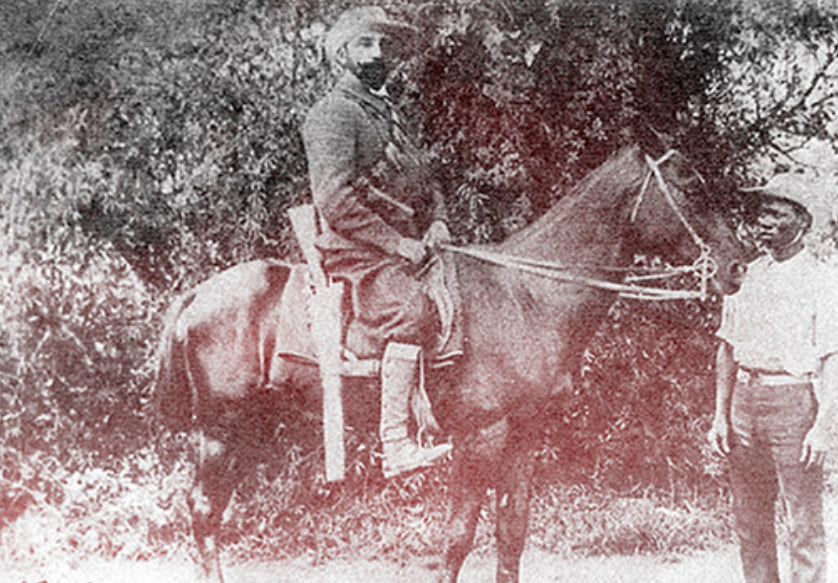
Foreign media also noted the combat successes of the Russian detachment:
“Captain Ganetsky and his Russian hundred, as they telegraph to English newspapers from Lourenco Marques, make a successful search in the area of Sand River, where the Russians penetrated the line of the British outposts and captured a wagon with ammunition and ten mules.”
Another volunteer, Mikhail Engalychev, also wrote about the Russian detachment in the newspaper Tiflissky leaf. In his article, he noted the special courage of Ganetsky himself, who was distinguished by his “composure when saving the wounded of his detachment; the latter he always carried on his own shoulders from the sphere of enemy fire, risking being killed every minute.
https://sputnikipogrom.com/history/33384/russian-heroes-of-boer-war/
JOHN COSTAS
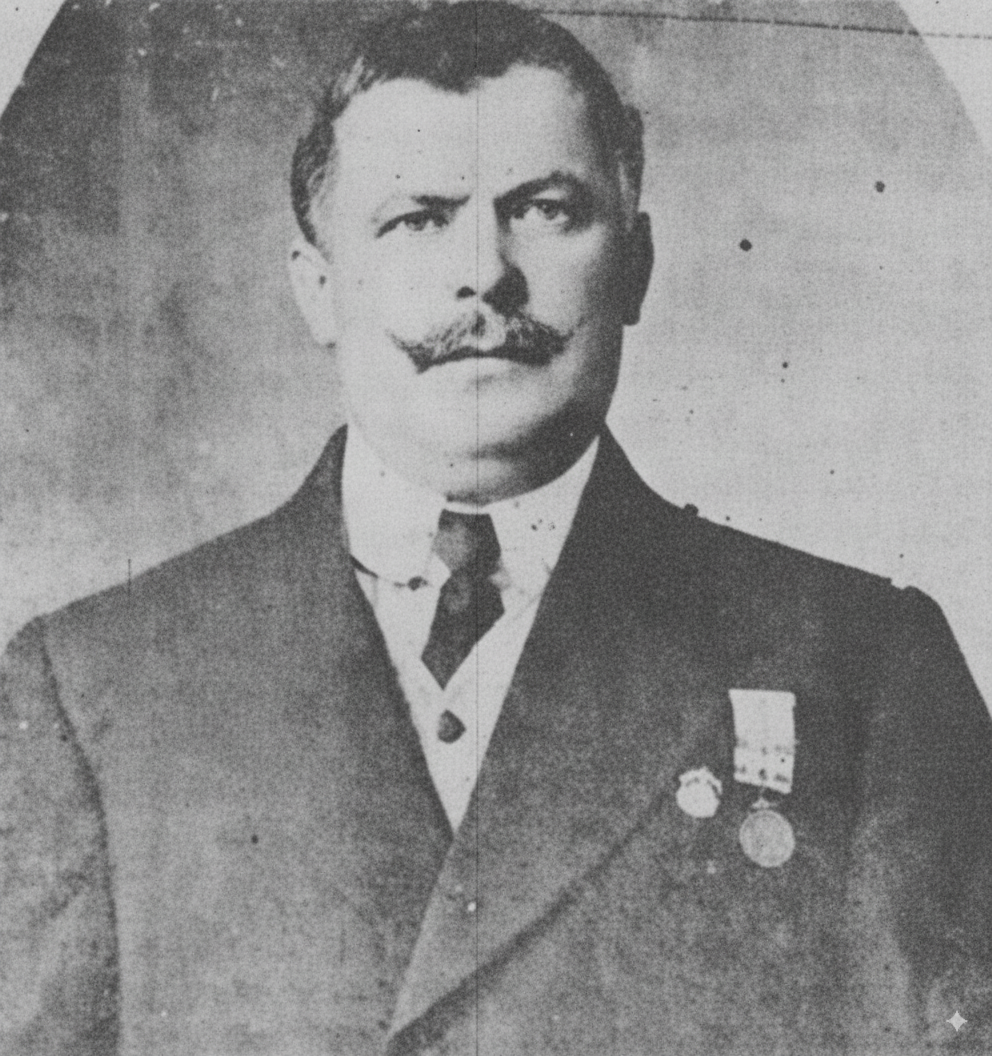
John Costas, (Ioannis Papakostas ) was born in 1868 in the small village of Lias, Greece. Both his father and grandfather were priests. Before his father was killed by the Turks he instilled in his son a love of freedom and the struggle for it. By 1894, John had immigrated to Australia then moved to East Africa where he stayed for about 2 years. He worked as an artisan on the Dar Es Salaam railway line until the end of 1898.
Thereafter he arrived in Johannesburg and by the time the Anglo Boer War had broken out, he moved to Stellenbosch, Cape Colony and volunteered to fight for the Boers against the ‘Empire’. He was dubbed ‘The Hero of Modder River’ where he ‘fought like a lion’. He fought at Spioenkop and also Paardeberg. Taken prisoner by the British, he was sent to Ceylon, then Colombo in India and later St Helena. (some sources only mention Ceylon).
1903 found him back in Stellenbosch where he opened a café opposite the university campus. In 1906 he brought his nephew from Greece to become the first Greek to enter Stellenbosch university to study law. Eight years later he returned to Greece and settled in Athens. He was initiated into Epirotan Society, an organisation founded in 1906 and led by people of Epirotan descent, for the purpose of liberating Epirus from Ottoman rule and its unification with Greece. Costas fought as a leader of a minor Greek guerilla band in the First Balkan War in the region of Thesprotia where he faced mainly Cham Albanian irregulars who fought on the Ottoman forces’ side. Furthermore, in 1914 he joined the armed forces of the Autonomous Republic of Northern Epirus.
He remained in Greece and but after the defeat of Eleftherios Venizelos’ Liberal Party at the 1920 parliamentary elections Costas, who was a Venizelos supporter, left Greece, returned to South Africa and settled again in Stellenbosch where he died in 1932. His grave can be found in the Greek Orthodox Cemetery in Cape Town.
Distinctions
For his services to the Greek State, he was honoured with the rank of Captain and with a military medal. As a tribute for his participation in the Second Boer War, South Africa built a bust in his birthplace, Lias,.[1] [5] Moreover, Costas donated an important amount of money for various needs of Lias community.[1]
Refs and Sources:
1. Βασίλη Κραψίτη, Σύγχρονοι Ηπειρώτες ευεργέτες (1913–1986), εκδόσεις του συλλόγου “Οι φίλοι του Σουλίου”, Athens, 1987, p. 136-138.
2. E.A. Mantzaris, The Greeks in South Africa Archived 5 September 2015 at the Wayback Machine., in Richard Clogg (ed.), The Greek Diaspora in the Twentieth Century, Macmillan Press, 1999, p. 121.
3. Venetis, Antonios. “Ηπειρώτης στους Μπόερς”. enet.gr (in Greek). Eleftherotypia. Retrieved 30 October 2015.
4. “Το ηπειρωτικό κομιτάτο”. amyntika.gr (in Greek). Amyntika. Retrieved 30 October 2015.
5. “Greeks and the Anglo-Boer War”. bloemhc.co.za. Bloemfontein Hellenic Community. Retrieved 30 October 2015.
Sergeant Joe Wade.
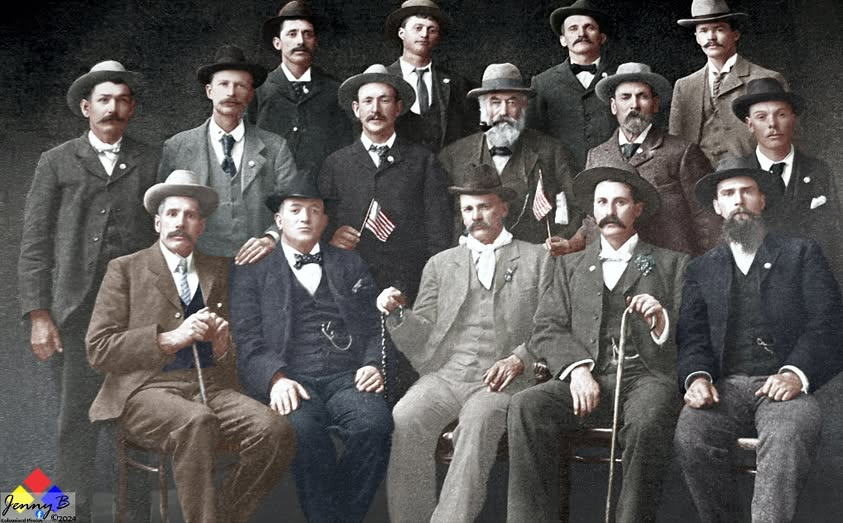 Sgt Joe Wade (Seated front row, right most.) a member of the Irish Brigade.
Sgt Joe Wade (Seated front row, right most.) a member of the Irish Brigade.
Joe Wade was born in Balbriggan, where Mr McCormack’s father also hailed from. The family owned the historic White Hart Inn pub in the area until it closed in 2015.
Joe becomes a passionate figure in Irish nationalism and helped form the Irish Transvaal Brigade and was a member of the wrecking corps, blowing up bridges and railway lines throughout the entire Anglo-Boer war.
After the war he was unable to return to Ireland in case he suffered reprisals from the British. Instead, he started a new life in St. Louis, Missouri, where he died on November 7t, 19244.
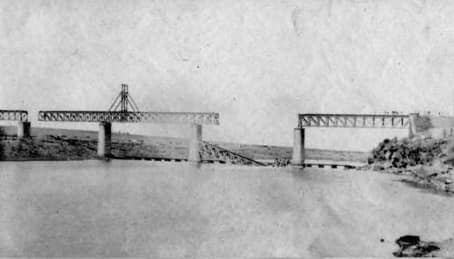
A bridge over the Vaal, destroyed by the Irish Transvaal Brigade.
When the Irish Brigade suffered their first casualties, Hugh Carberry who was a close friend of Joe Wade was wounded to his forehead by a bullet but survived and was taken to a field hospital where the bullet was removed. Joe visited his friend when he was recuperating in Pretoria. Unfortunately, Carberry suffered a stroke and he passed.
Sgt Wade was part of the dynamite squad who were successfully blowing up bridges and oftentimes leaving ‘calling cards’ which read, “with the compliments of the Irish Brigade.”
Joe Wade was involved in the guerrilla stages of the war and took part in an attack on one of two forts at Monument Hill, Belfast.
An incident in June 1900 in which he took part resulted in the capture of around 300 Australians.
Roland William Schikkerling documented the following, “Joseph Wade, sleeping near us one night, with his package of loot under his head and also strapped to his person. For fear of theft, sighed and groaned. I asked what the matter was. Had he been wounded? “no,” says he “I cannot wait until daytime to see what I look like in decent clothes.”
On the 16th August 1901, (again Schikkerling writes), he was talking to a captured soldier who was in turn wearing Joe’s threadbare and torn trousers. The soldier hadn’t been too keen on swapping trousers with Joe until he demanded, “Deliver! Or I blow the living water out of you!”
SRC: Joe Wade – Footsteps of a Rebellion – Kevin McCormack and Paul L Davies

